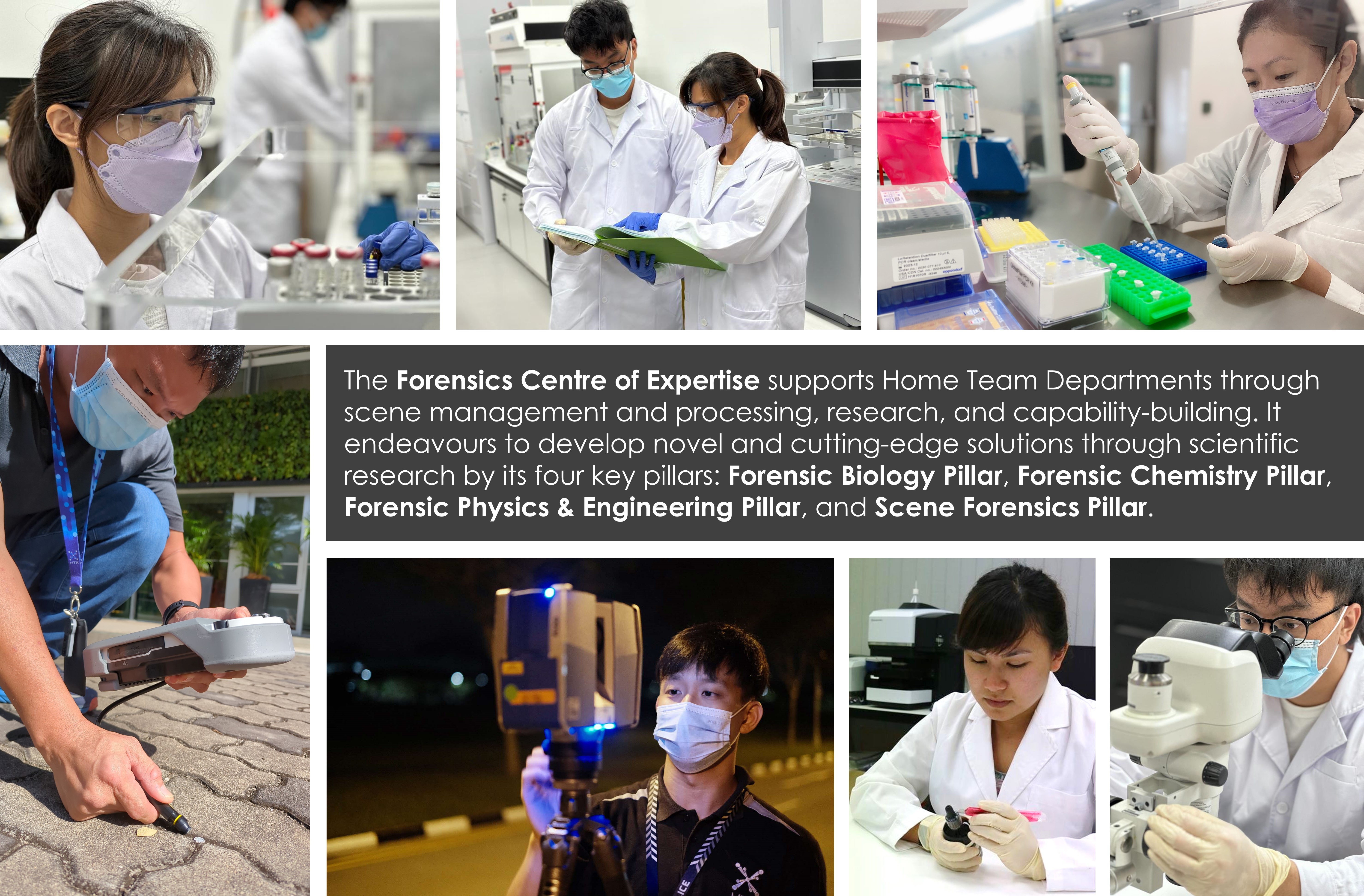
The Forensics Centre of Expertise (CoE) supports Home Team Departments (HTDs) through scene management and processing, research, and capability-building. Leveraging on our diverse range of expertise in the sciences and engineering, we work closely with our stakeholders, partners, and collaborators to push the boundaries of science to develop organic capabilities vis-à-vis the operational needs of the HTDs.
Why is forensic science important? The first few hours after the commissioning of a crime are often referred to as the “Golden Hours” and are crucial for investigation. As time passes, evidence degrades and becomes more susceptible to being lost, compromised, or destroyed. The Forensics CoE endeavours to develop novel and cutting-edge solutions while ensuring that the research is fit-for-purpose to meet the needs of our HTDs.
Our crime and drug scene specialists brave the scenes to collect and process evidence, and provide advice to investigators. Crime scene investigations and forensic intelligence gathering are enhanced through scientific research by the four key pillars of the CoE:
- The Forensic Biology Pillar focuses its research and development in rapid DNA technologies, DNA collection methods, serology, phenotyping, and human identification. Beyond DNA, we seek to provide predictive intelligence and quick investigative leads by developing new capabilities in nascent fields such as microbiomics, proteomics, and metabolomics.
- The Forensic Chemistry Pillar strives to deliver game-changing solutions in drug forensics to support the Central Narcotics Bureau, as well as legislative changes in the Misuse of Drugs Act (MDA). We apply automation and advanced scientific techniques in the detection, characterisation, and identification of unknown chemicals and materials, and conduct research pertaining to post-blast investigations to safeguard Singapore’s safety and security.
- The Forensic Physics & Engineering Pillar endeavours to push the frontiers of forensic science by applying innovative thinking and emergent technologies to traditional forensic fields such as handwriting, fingerprints, shoeprints, toolmarks, and bloodstain patterns. The application of computational science, artificial intelligence, and machine learning to age-old questions and new challenging problems can yield more info and faster intel to help drive the operational capabilities of the HTDs to the next level.
- The Scene Forensics Pillar spearheads research to compact space and time. Besides aiming to reduce the processing time for crime/drug/fire scenes, traffic collisions, and post-blast scenes, it explores the latest technologies for the collection of physical evidence and looks into state-of-the-art scene mapping techniques to re-enact and reconstruct the scene.

